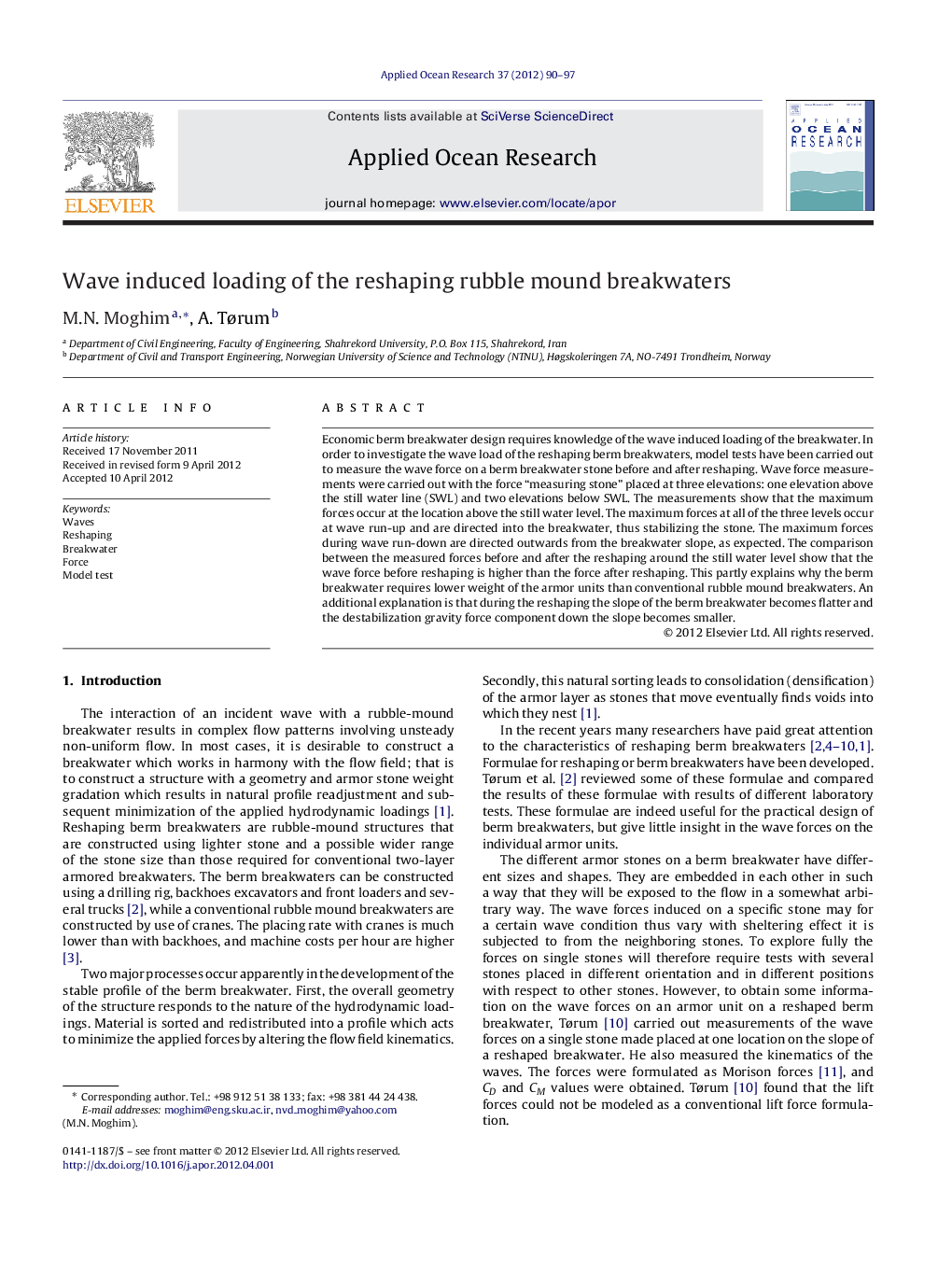| Article ID | Journal | Published Year | Pages | File Type |
|---|---|---|---|---|
| 1720243 | Applied Ocean Research | 2012 | 8 Pages |
Economic berm breakwater design requires knowledge of the wave induced loading of the breakwater. In order to investigate the wave load of the reshaping berm breakwaters, model tests have been carried out to measure the wave force on a berm breakwater stone before and after reshaping. Wave force measurements were carried out with the force “measuring stone” placed at three elevations: one elevation above the still water line (SWL) and two elevations below SWL. The measurements show that the maximum forces occur at the location above the still water level. The maximum forces at all of the three levels occur at wave run-up and are directed into the breakwater, thus stabilizing the stone. The maximum forces during wave run-down are directed outwards from the breakwater slope, as expected. The comparison between the measured forces before and after the reshaping around the still water level show that the wave force before reshaping is higher than the force after reshaping. This partly explains why the berm breakwater requires lower weight of the armor units than conventional rubble mound breakwaters. An additional explanation is that during the reshaping the slope of the berm breakwater becomes flatter and the destabilization gravity force component down the slope becomes smaller.
► In this study we investigate the wave induced loading of the reshaping rubble mound breakwaters. ► We use experimental model tests to measure the wave force on the breakwater stones before and after reshaping. ► The maximum forces at all of the three levels occur at wave run-up and are directed into the breakwater. ► The maximum forces during wave run-down are directed outwards from the breakwater slope. ► The wave force before reshaping is higher than the force after reshaping.
